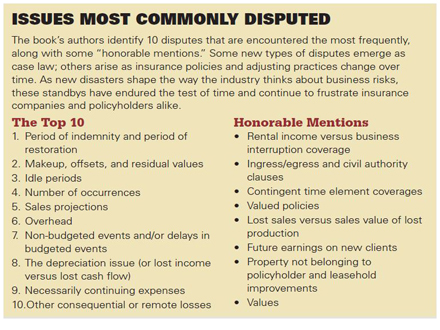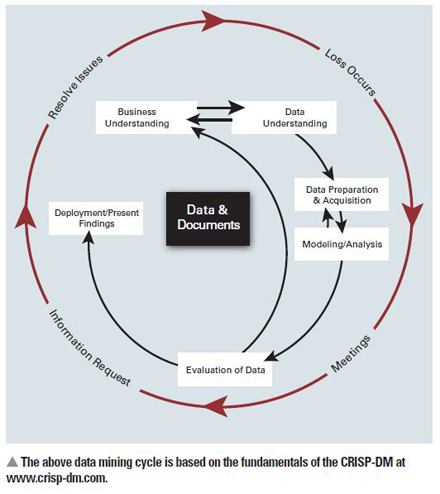
 Q. What about outside the wide-scope disasters? Is there a discussion for other less catastrophic type claims?
Q. What about outside the wide-scope disasters? Is there a discussion for other less catastrophic type claims?
A. Yes, we have also added two other chapters. One goes beyond first-party property coverage (Chapter 11) and discusses BI issues as they relate to product liability, builders' risks, and other types of insurance. In Chapter 12, we elaborate on techniques for handling claims in today's modern corporation, such as the use of technology, the paperless claim, and dealing with international losses. Finally, we have sought the guidance of several well-known and respected professionals in the field, such as David Goodwin of Covington & Burling LLP, David Barrett and Peter Rosen of Latham & Watkins LLP, and Peter Khan and Brad Ridden of the forensic accounting firm Matson Driscoll & Damico. They provided us with different perspectives on the BI claims process. Their contributions as additional writers certainly enhance the book.
Recommended For You
Want to continue reading?
Become a Free PropertyCasualty360 Digital Reader
Your access to unlimited PropertyCasualty360 content isn’t changing.
Once you are an ALM digital member, you’ll receive:
- Breaking insurance news and analysis, on-site and via our newsletters and custom alerts
- Weekly Insurance Speak podcast featuring exclusive interviews with industry leaders
- Educational webcasts, white papers, and ebooks from industry thought leaders
- Critical converage of the employee benefits and financial advisory markets on our other ALM sites, BenefitsPRO and ThinkAdvisor
Already have an account? Sign In Now
© Touchpoint Markets, All Rights Reserved. Request academic re-use from www.copyright.com. All other uses, submit a request to [email protected]. For more inforrmation visit Asset & Logo Licensing.







